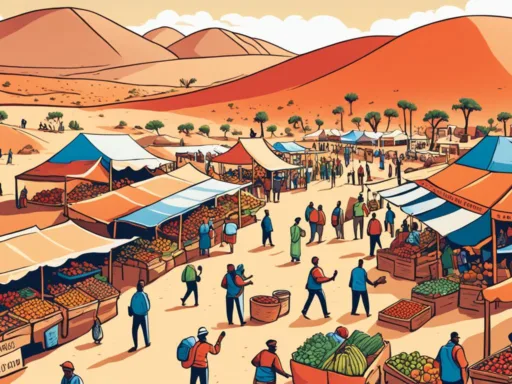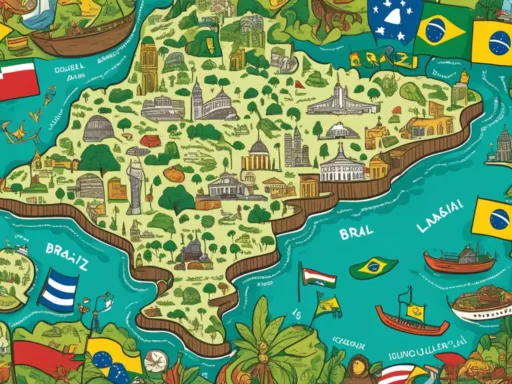In the heart of the Caucasus region of southeastern Europe lies Armenia, a country replete with cultural richness and linguistic diversity. The languages spoken in Armenia are as varied and colorful as its history, with each tongue weaving a distinct thread through the nation’s social fabric. At the forefront is the official language, Armenian, which resonates through the bustling streets, government buildings, and academic institutions. Yet, the symphony of sounds in Armenia expands to include a collection of minority and foreign languages, exemplifying Armenia’s commitment to multilingualism and cultural inclusion.
From the ancient inscriptions carved in Armenian script to the modern multilingual signs that line Armenia’s cities and towns, the country’s linguistic landscape is a testament to its storied past and dynamic present. Minority languages such as Assyrian, Greek, and Northern Kurdish flourish within their respective communities, while global tongues like English and Russian reflect Armenia’s openness to international exchange and cooperation. This linguistic diversity in Armenia fosters a vibrant atmosphere of cultural dialogue and mutual understanding.
Key Takeaways
- Armenian is the official language and is widely spoken across Armenia.
- The country’s linguistic diversity includes several minority languages recognized by the ECRML.
- Russian remains a significant foreign language due to historical ties with Armenia.
- English is gaining popularity, signaling Armenia’s growing engagement with the international community.
- Multilingualism in Armenia is embraced and celebrated, contributing to its rich cultural tapestry.
Armenia’s Official Language: Armenian
As the heartbeat of Armenia’s cultural identity, the Armenian language stands firmly as the official language Armenia adheres to, in concordance with the constitutional mandate. Both revered and practiced in every echelon of the nation’s operations, the language echoes throughout its historical landscapes and contemporary alleys, fostering a linguistic unity that is pivotal to Armenia’s national pride.
In reference to the pivotal language policy Armenia embodies, the Constitution’s Article 20 preeminently stipulates Armenian as the state language, underpinning the essence of communication within the country’s jurisdiction. This policy engenders a tapestry of linguistic uniformity across governmental, academic, and societal platforms, thereby welding the populace with a shared thread of verbal and written expression.
Rooted in its own branch of the Indo-European family, Armenian splinters into two principal standardized forms: Eastern and Western Armenian. Predominantly, Eastern Armenian fuels the realms of government, commerce, and day-to-day interaction among the citizens, casting it as the dominant linguistic force within the country.
Delving deeper into the Armenian language’s uniqueness, one is spellbound by its illustrious alphabet—a medley of 39 letters conceived in the 5th century. This alphabet is more than a mere tool of communication; it is a sacred relic that continues to weave the fabric of Armenian heritage, preserving the nation’s unique vocal and written symphony for generations to fathom and cherish.
The Armenian alphabet, with its 39 splendorous characters, is not just a means to an end but an art form—a reflection of a civilization’s quest for knowledge and a symbol of their resilience and autonomy.
Such is the reverence for this culture-rich mode of expression, that language policy in Armenia is not a subject of mere compliance but one of fervent loyalty. The Armenian language has not only transcended temporal boundaries but also emerged as a custodian of national identity.
- Armenian: The official state language
- Article 20 of the Constitution: Guarantor of the linguistic norm
- Eastern Armenian: The dominant dialect in public and private sectors
- The Armenian alphabet: A cultural icon with a storied inception

Linguistic Heritage: Armenian Dialects and Historical Influences
Delve into the heart of Armenian culture, and one will find a linguistic heritage rich with variegated dialects and the indelible imprint of historical tides. The Armenian language, a cornerstone of national identity, chronicles this journey through its diverse dialects and the Armenian alphabet—a beacon of cultural singularity. It is a story of linguistic evolution and resilience, one that underscores the nation’s commitment to cultural preservation and the adaptation forces exerted by history.

The Evolution of Eastern and Western Armenian
The Armenian language is a tableau of historical interaction and divergence, with Eastern and Western Armenian dialects serving as the language’s contemporary custodians. These primary dialects stem from a common root but took separate paths during historical events such as the Armenian diaspora. Eastern Armenian became the predominant dialect in the Republic of Armenia, while Western Armenian spread through the diasporic communities, particularly in the Middle East and North America. The existence of these dialects illuminates the dynamic nature of Armenia’s linguistic canvas, revealing a flexible language capable of territorial and cultural bifurcation.
Linguistic Legacy of the Soviet Era
The Soviet epoch left an indelible mark on Armenia’s linguistic landscape. During this period, the Russian language gained prominence, doing dual duty as the lingua franca of the broader Soviet community and a window to multilateral communication. It was a time when Russian words permeated the Armenian vernacular, and bilingualism became common. However, post-Soviet Armenia has seen a decisive swing back to its roots, with Armenian reasserting its role as the undisputed medium of instruction and governance, aligning with the linguistic identity and heritage of the nation.
Armenian Alphabet: A Unique Cultural Identity
Among the distinctive elements of linguistic heritage Armenia boasts, the Armenian alphabet stands paramount. Conceived in the 5th century, it is a badge of the nation’s historical ingenuity—a script entirely its own. This exclusive alphabet not merely codifies language but also encapsulates the cultural identity of Armenia, marking it as a unique communicator of Armenian thoughts, values, and heritage. It represents an unbroken link to the past, a reverberation of a voice distinctly Armenian.
| Dialect | Usage | Characteristic Features |
|---|---|---|
| Eastern Armenian | Primary dialect within Armenia | Known for its distinct phonetic elements and vocabulary influenced by the Russian language during the Soviet era |
| Western Armenian | Spoken by the diaspora communities | Retains some archaic features and has been influenced by Arabic, Turkish, and French |
In summation, the linguistic heritage of Armenia tells the tale of a people and language adapting to the waves of history, yet steadfast in preserving the essence of its identity through words and scripts that resonate as deeply today as they did in the past.
Languages Spoken Armenia: Foreign and Minority Languages
In the vibrant cultural tapestry of Armenia, a broad spectrum of languages other than the national tongue captures the diversity of its people. With a history as a crossroads of civilisations, Armenia has become home to multiple minority languages Armenia has officially recognized, as well as popular foreign languages Armenia citizens frequently engage with.
The Russian language Armenia has embraced for centuries still flourishes today, a profound echo from the era of the Russian Empire and Soviet Union. Despite the sociopolitical transformations that have taken place, the resonance of Russian is undeniable among the Armenian populace. Yet, there is an evident rise in the prominence of the English language Armenia leans towards in its pursuit of international rapport and modern education.
The interlace of Armenian’s foreign languages is not just a remnant of its past but a deliberate step towards a future where communication breaks borders and builds bridges.
While Russian holds a stronghold as an indispensable foreign language, English has begun to challenge its prevalence. This reflects a shift towards global integration, where proficiency in English opens doors to broader opportunities and cross-border interactions. The evolution of the English language’s presence signifies Armenia’s proactive attitude in fostering global cooperation and connectivity.
- Significant presence of the Russian language due to historical ties
- Increasing popularity of English reflects Armenia’s global outreach
- The preservation and use of minority languages highlight Armenia’s cultural richness

Minority communities in Armenia have a robust linguistic representation, with Assyrian, Greek, and Kurdish languages contributing to the nation’s rich cultural milieu. Each community upholds its distinctive language and customs, enhancing the pluralistic nature of Armenia’s identity. Languages like Yazidi, spoken by the Yazidi people, maintain a significant place in the mosaic of minority languages Armenia takes pride in.
| Language | Community | Prevalence |
|---|---|---|
| Yazidi Kurdish | Yazidi | Widely spoken by the Yazidi minority |
| Assyrian | Assyrian | Preserved among the Assyrian community |
| Greek | Greek | Spoken by a small but resilient community |
| Russian | Russian and others | Commonly used as a second language |
Ultimately, the multiplicity of tongues spoken in Armenia does more than just communicate; it is the embodiment of Armenia’s historical depth, societal flexibility, and forward-looking aspirations. As the country fosters these various languages—each serving as both a cultural artifact and a tool of modern expression—Armenia’s commitment to its linguistic patrimony and openness to the world stage proudly resonates.
Language Education and Policy in Armenia
In the realm of education and governance, Armenia champions a comprehensive approach to language education and policy, emphasizing the importance of linguistic dexterity. Following the dissolution of the Soviet Union, the Armenian government reaffirmed the cornerstone status of the Armenian language while promoting a diverse language curriculum in educational institutions. This fine balance between honoring linguistic heritage and embracing multilingualism illustrates the nation’s dedication to fostering effective communication in an interconnected global landscape.
Languages Taught in Armenian Educational Institutions
Armenian schools pride themselves on offering a rich assortment of languages, ensuring students are well-equipped for the demands of the modern world. Within their halls, languages such as English, Russian, French, German, Italian, Spanish, and Persian are imparted to eager young minds, laying the groundwork for future international engagement. The growth of language education in Armenia is suggestive of its forward-thinking ethos, nurturing the next generation in a multilingual milieu that underscores the value of global literacy alongside national identity.
Government’s Language Policy Post-Soviet Union
Since gaining independence in 1991, Armenia has enacted policies that bolster the primacy of the Armenian language while recognizing the significance of language rights in Armenia. A robust language policy in Armenia further ensures that minority languages are safeguarded, enabling their preservation and continual usage within their communities. This policy not only reinvigorates the cultural fabric of the nation but also aligns with international standards of linguistic rights and education.
Multilingual Signage and Business Communication
The ethos of multilingualism seamlessly extends into Armenia’s business sector and public signage. A stroll through Yerevan reveals an orchestra of languages showcased on street signs, manifesting Armenia’s commitment to inclusivity and international commerce—a reflection of business communication in Armenia. Touted as pragmatic and hospitable, this multilingual approach aids not just the local populace but also international visitors and business partners, weaving a narrative of Armenia as an inviting junction of cultures and languages.
FAQ
What Languages are Spoken in Armenia?
Alongside the official language, Armenian, Armenia is home to a myriad of languages that reflect its rich linguistic diversity. Minority languages such as Assyrian, Greek, Russian, and Northern Kurdish are spoken by respective ethnic communities. Additionally, due to historical connections and global interactions, foreign languages like English and Russian are also prevalent in Armenia, contributing to the country’s multilingualism.
What is the Official Language of Armenia?
The official language of Armenia is Armenian, as mandated by Article 20 of Armenia’s Constitution. Armenian holds a special place in the cultural and governmental spheres of the country and constitutes a significant aspect of Armenia’s national identity. It is the language primarily used in government, education, and media, and is central to language policy in Armenia.
What are the Main Dialects of the Armenian Language?
Armenian is a pluricentric language with two main dialects: Eastern Armenian and Western Armenian. Eastern Armenian is the variant prevalent in the Republic of Armenia, while Western Armenian is largely spoken by the Armenian diaspora, especially those originating from Western regions of historical Armenia before the Armenian Genocide.
How Did the Soviet Era Influence Armenian Linguistics?
The Soviet era had a profound impact on the Armenian language and its use. Russian became an influential language and was taught as a compulsory second language in schools. The era shaped the linguistic landscape by promoting Russian, which remains a widely known language in Armenia today, alongside the ongoing primacy of the Armenian language.
Why is the Armenian Alphabet Considered a Unique Aspect of Cultural Identity?
The Armenian alphabet is considered unique because of its origin and the role it plays in Armenia’s cultural identity. Created in the 5th century by Saint Mesrop Mashtots, the Armenian alphabet with its 39 letters has been a foundational element in preserving the Armenian language and cultural heritage, successfully adapting to capture the phonological nuances of the language.
What Foreign Languages are Commonly Spoken in Armenia Besides Armenian?
Russian is the most common foreign language spoken in Armenia, a legacy of the nation’s historical ties with the Russian Empire and the Soviet Union. English, though not as widespread as Russian, has seen increasing popularity, especially among the younger population and within academic and professional settings. Other languages such as French, German, Italian, and Spanish have also found a place in Armenia, primarily through education and media.
What Languages are Taught in Armenian Educational Institutions?
Armenian educational institutions offer a diverse array of language courses. While Armenian is the primary language of instruction, students often learn English and Russian as well. Schools also teach additional languages such as French, German, Italian, Spanish, and Persian, reflecting Armenia’s commitment to providing multilingual education to its students.
What Has Been the Government’s Language Policy Since the Soviet Union’s Dissolution?
The Government of Armenia has pursued a language policy that reestablishes and promotes the use of the Armenian language while also supporting the learning of foreign languages. This policy includes bolstering Armenian as the state language, preserving the linguistic rights of minorities, and encouraging multilingualism to enhance international relations and economic opportunities.
How Does Multilingualism Manifest in Business Communication in Armenia?
Multilingualism in Armenia extends to the sphere of business communication, where a mix of languages is used to cater to both local and international partners. Armenian remains the primary language of domestic business affairs, while English and Russian are commonly used in international business engagements. Multilingual signage and documents are indicative of the country’s adaptability and its accommodating approach to foreign investors and the global market.






